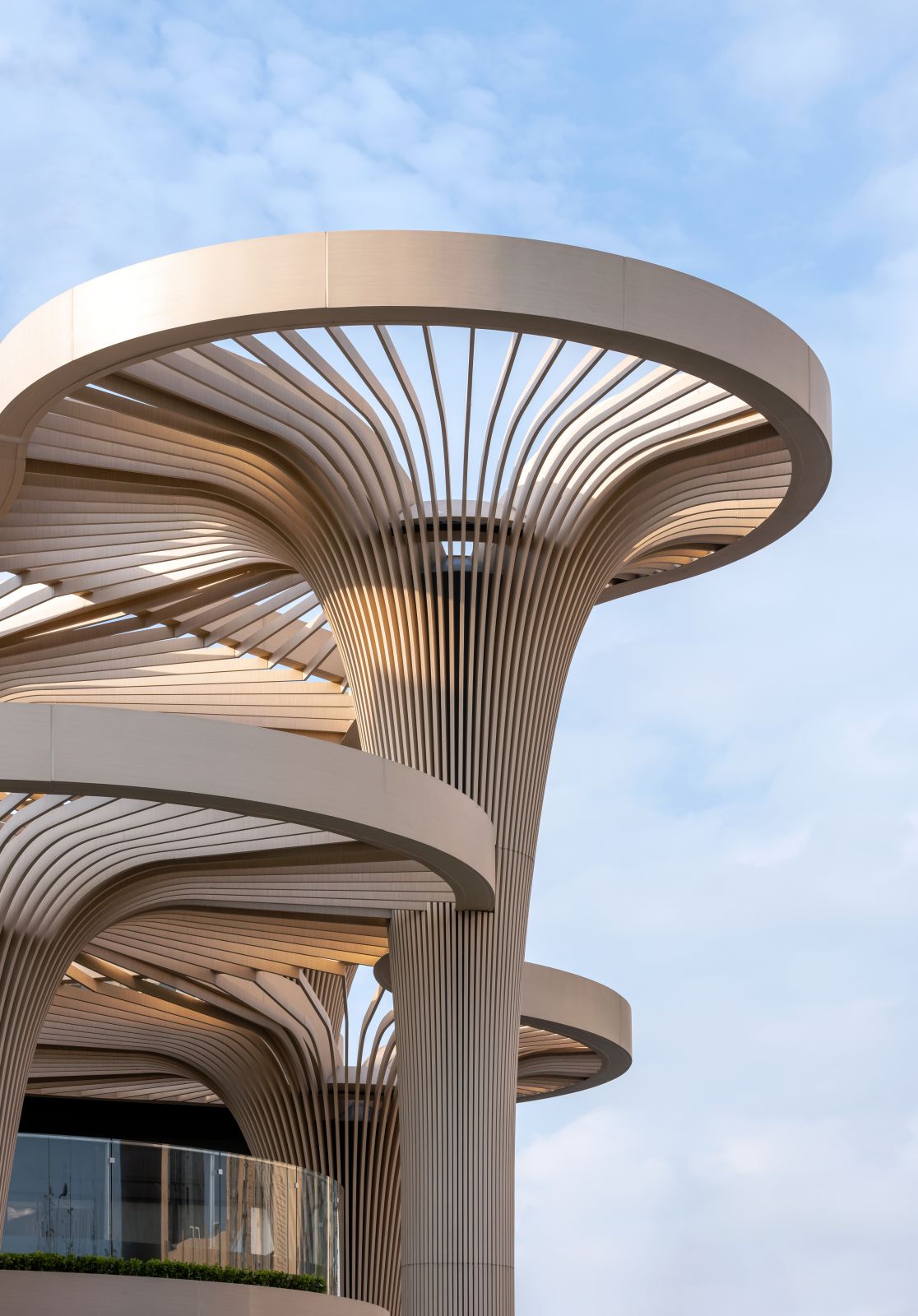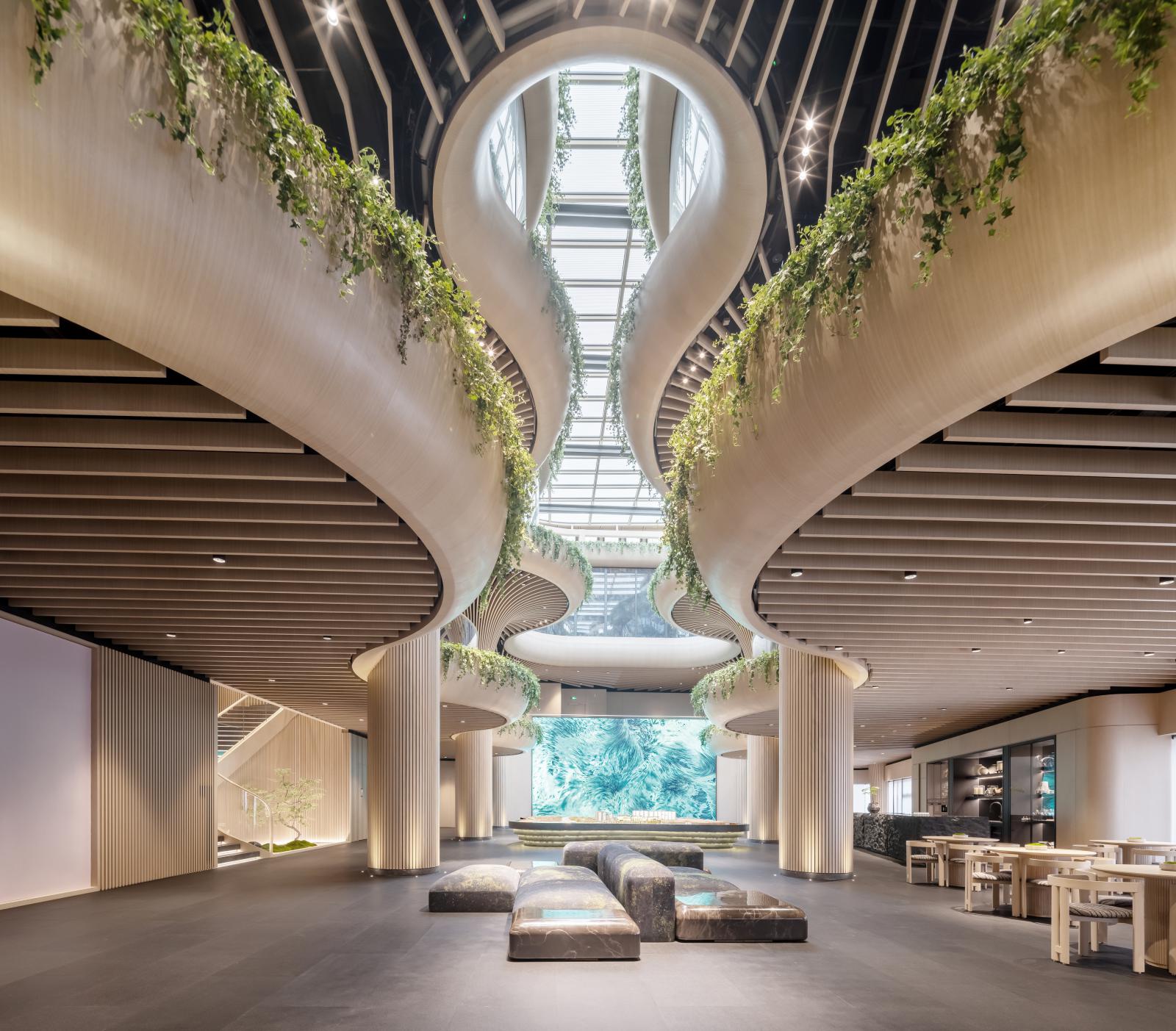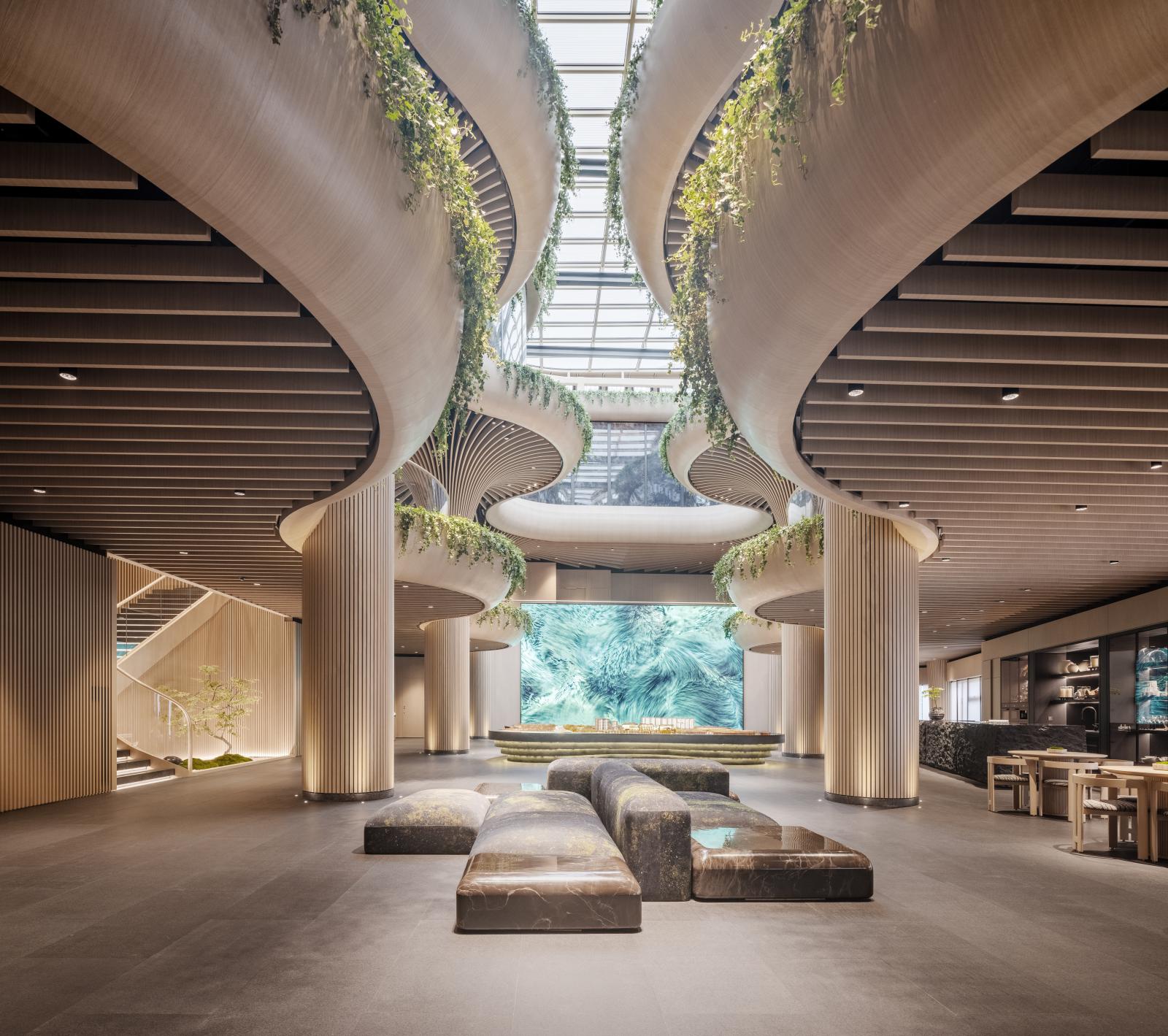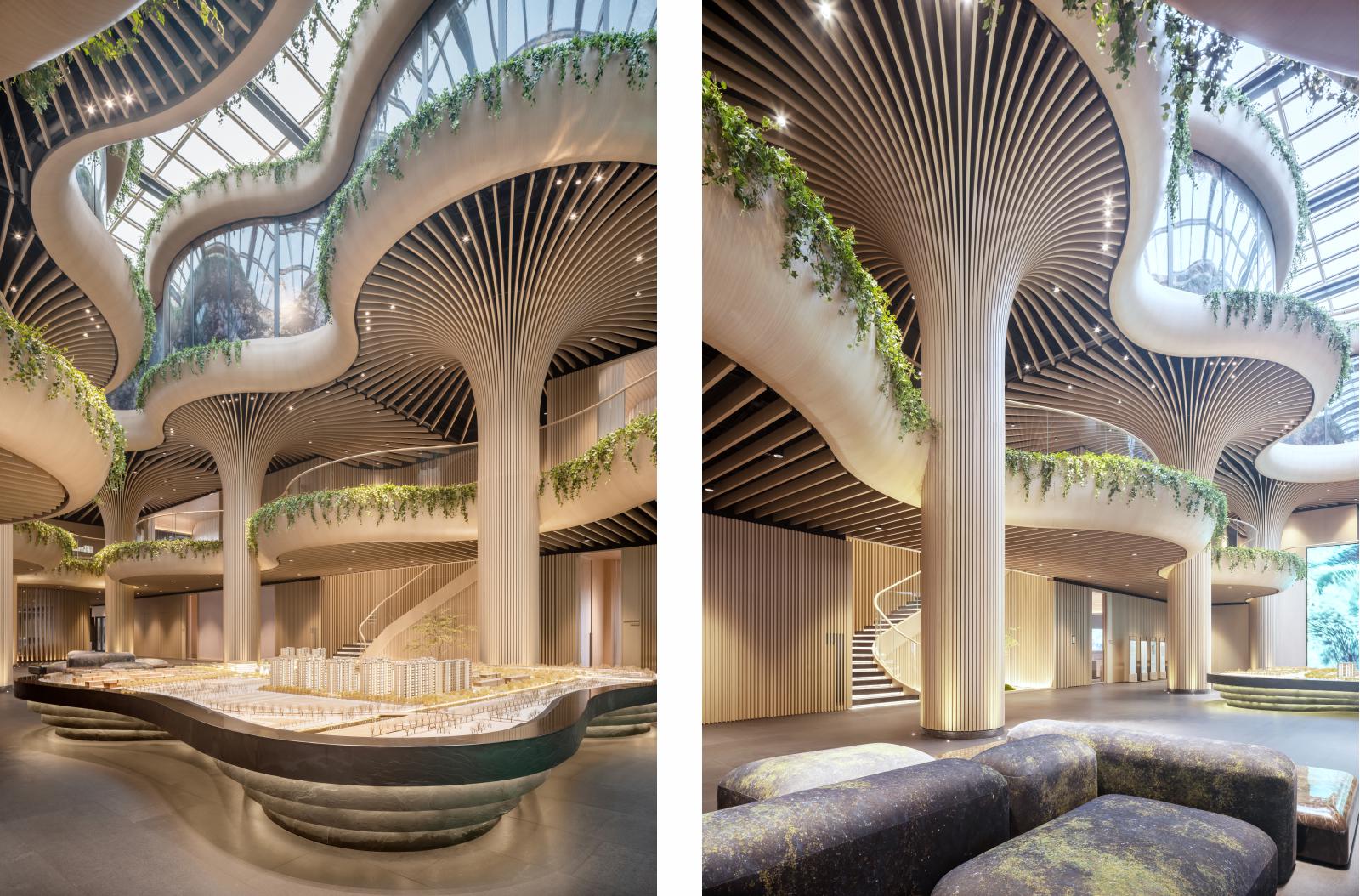A look to history determines the way forward
Situated 20km south-west of Shanghai, on a site that only four decades ago was densely forested, Solar Trees Marketplace is the first step in returning green to greater Shanghai and mitigating the effects of urban sprawl.
The launch of Phase I celebrates the biophilic architecture of Sydney-based architect Koichi Takada and introduces conversations around the importance of agile and adaptable architecture in achieving a sustainable future. It stands as a visual reminder of Koichi Takada Architects’ commitment to reintroduce nature to the built environment.

Phase I
Solar Trees Marketplace is designed for longevity. Planned to adapt and remain relevant as the needs of its owners change over time. Phase I, now open, sees Solar Trees Marketplace operating as a state-of-the-art, immersive sales and display suite for the adjacent 155,000m2 residential masterplan development, which has also been designed by Koichi Takada Architects.
Phase II
When the residents move into the neighbourhood, this extraordinary structure will evolve into a vibrant marketplace. Reflecting the vision of Koichi Takada Architects and developers Tian An to revive the role of traditional Chinese marketplaces in a contemporary way.

A translucent canopy of photovoltaic cells will power the operation of this bustling community hub intended to support local business and act as a gathering place for residents and neighbours. The seamless transition between functions is key to the success of the design and showcases the innovative potential of flexible, future-proof architecture.
The impacts of manufacture and construction on our planet are well-documented, and adaptable architecture is one approach to reduce impact. The ingrained flexibility of Solar Trees Marketplace allows for simple transformation, to ensure it remains relevant in an ever-changing, unpredictable future.

Biophilic design for humanising architecture
In time, the organic form of Solar Trees Marketplace is intended to merge with a promenade of native Camphor trees – transforming it into an oasis of calm amid the bustling urban landscape.
Once again restoring the dominance of nature. By seamlessly blending natural elements with a palette inspired by nature, the structure embodies the concept of biophilic architecture, creating an environment that establishes a strong connection between humans and nature.

Thoughtful manipulation of light and shadow, creates balance between aesthetics and practicality. Ample shade invites visitors to seek respite from the sun, while apertures draw in natural light and facilitate natural ventilation, reducing the need for artificial lighting and cooling.
This allows shoppers and retailers to enjoy the interplay of light and a gentle breeze whilst they go about their day. Solar Trees Marketplace is designed on one hand to express the beauty of nature and on the other hand replicate the positive wellbeing effects of being in nature.

A word from the architect
Koichi Takada says, “We were shocked to learn that this site was covered in trees as recently as 1984. Our design seeks to start conversations around what can be achieved through design and create a living, breathing environment that inspires, nurtures, and adapts to the needs of both residents and the community.“
“It was important for this building to embody the principles of biophilic design and showcase what progressive sustainable innovation can look like. I believe Nature holds the answers and Architecture can start the conversation.” Source by Koichi Takada Architects.

- Location: Shanghai, China
- Architect: Koichi Takada Architects
- Interior Design: Koichi Takada Architects
- Builder: Shanghai Strait Land Real Estate Co. Ltd
- Client: Tian An China
- Site area: 3,770m2
- GFA: 3,450m2
- Storeys: 3
- Status: Complete
- Photographs: Eiichi Kano, Aaron & Rex, ZY, Courtesy of Koichi Takada Architects




